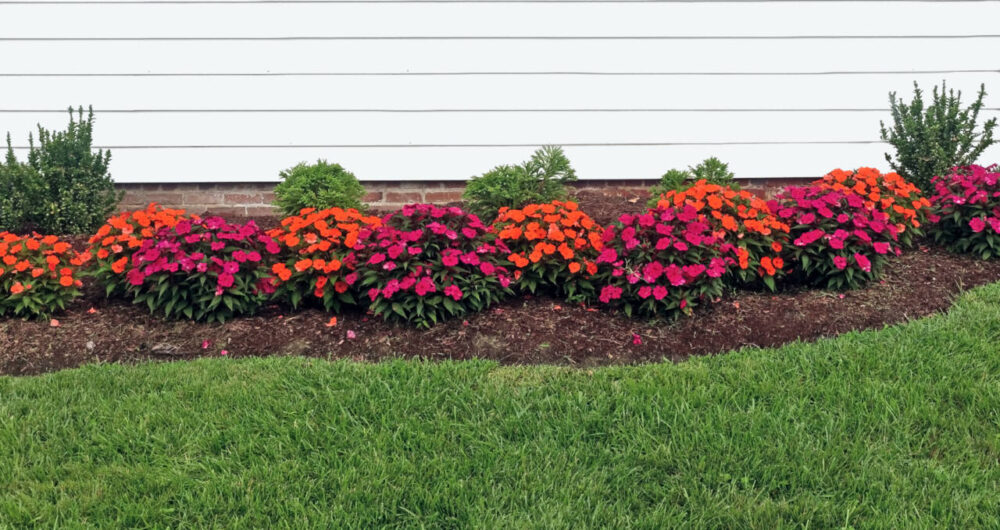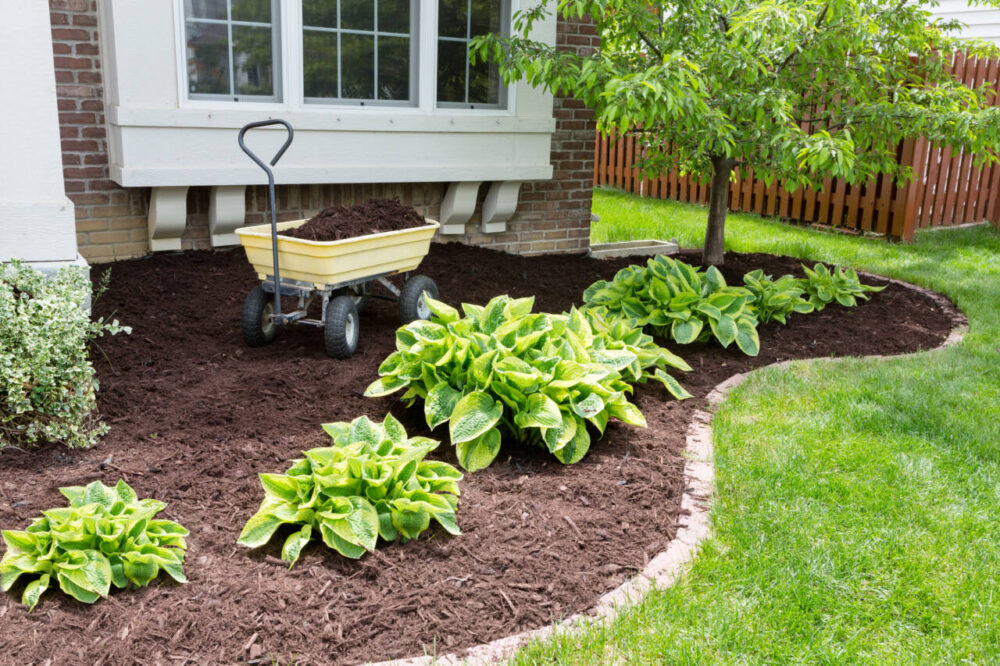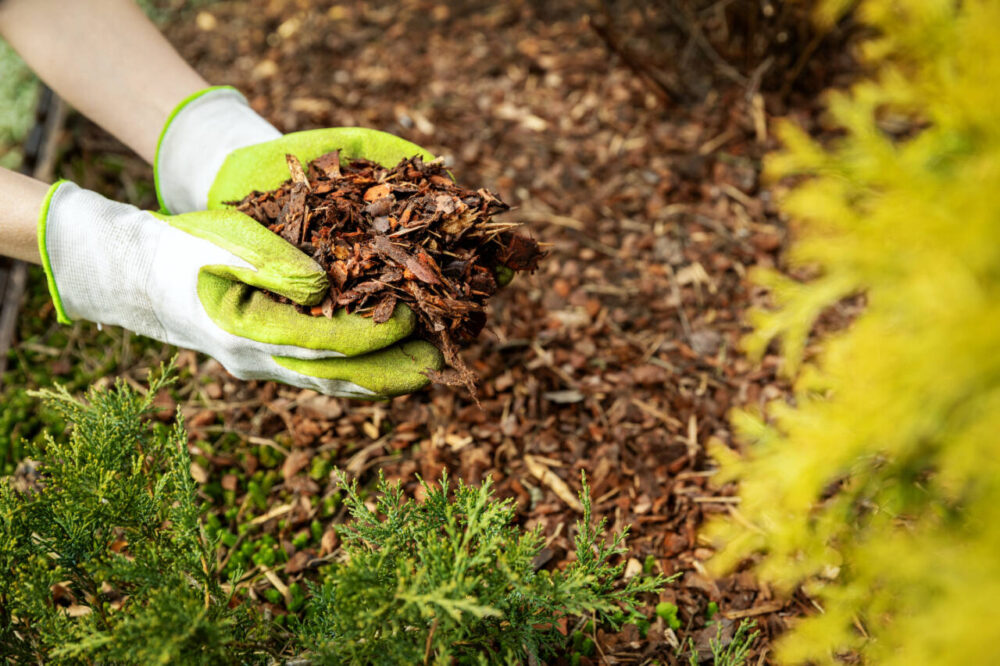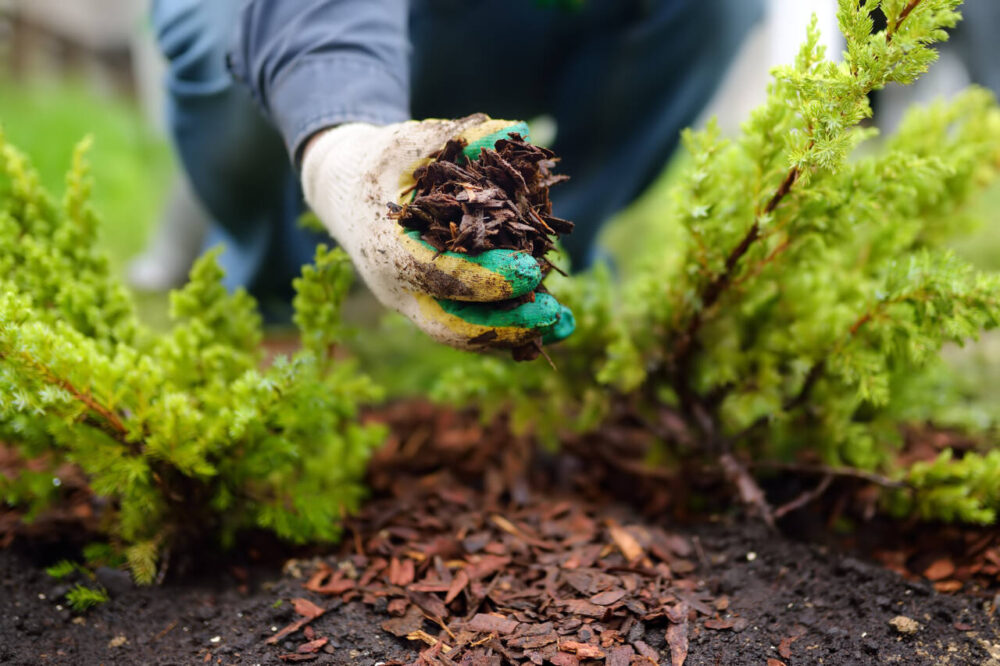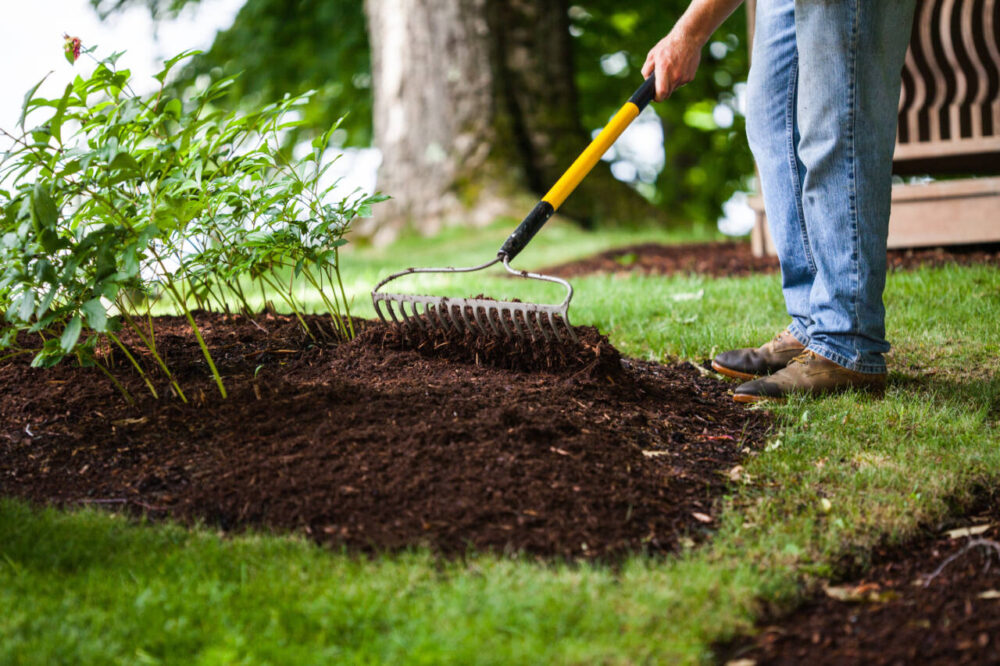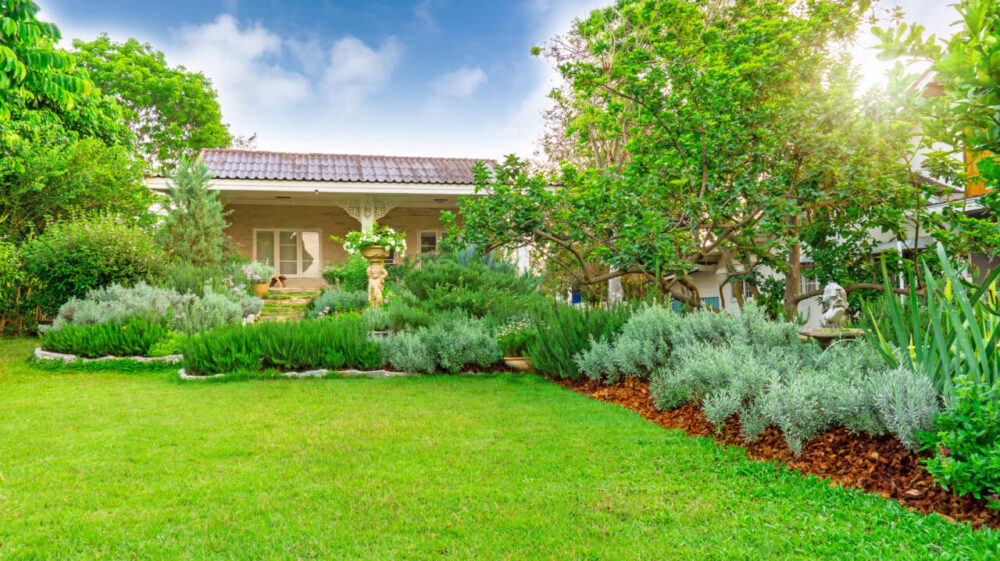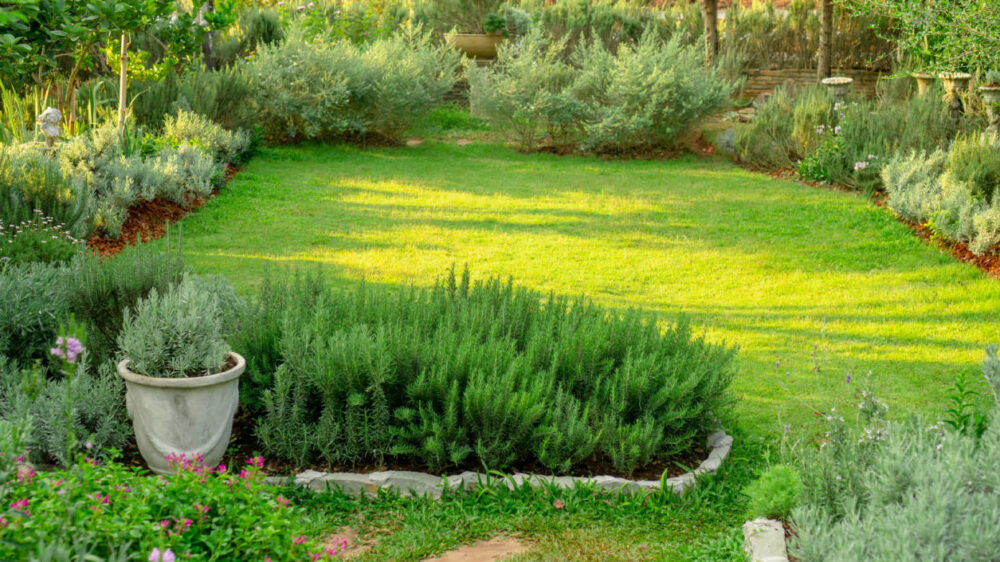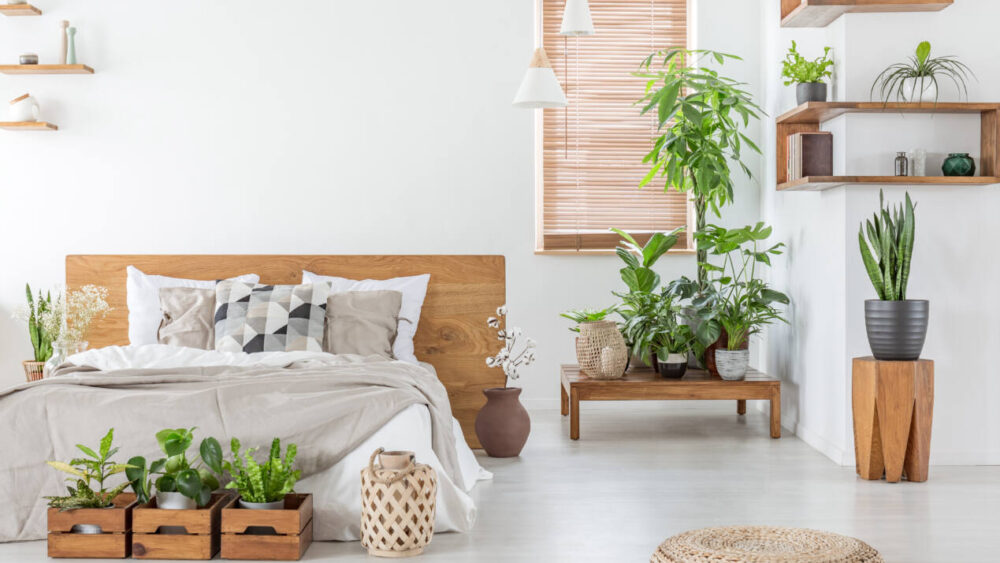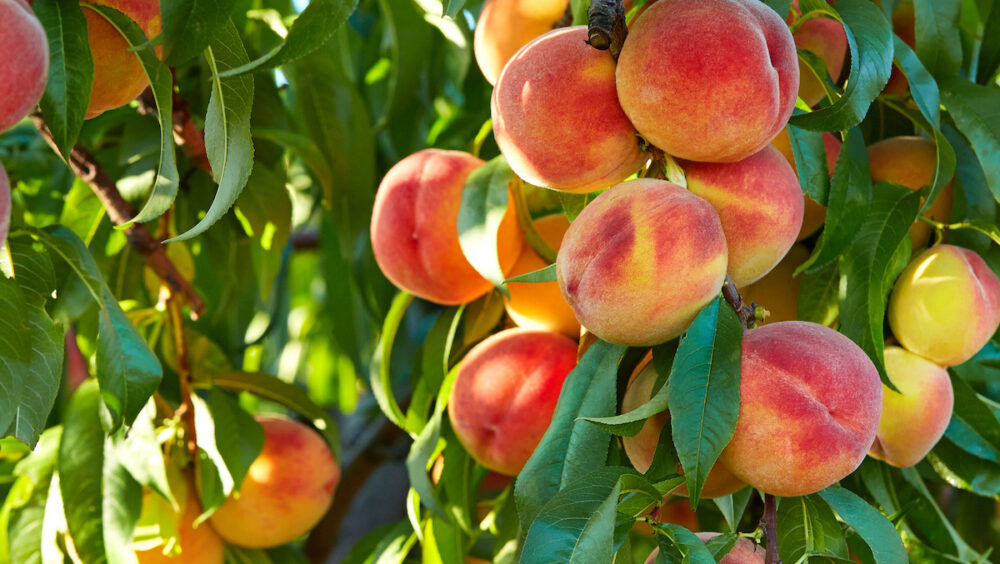What is mulch and do you really need it?
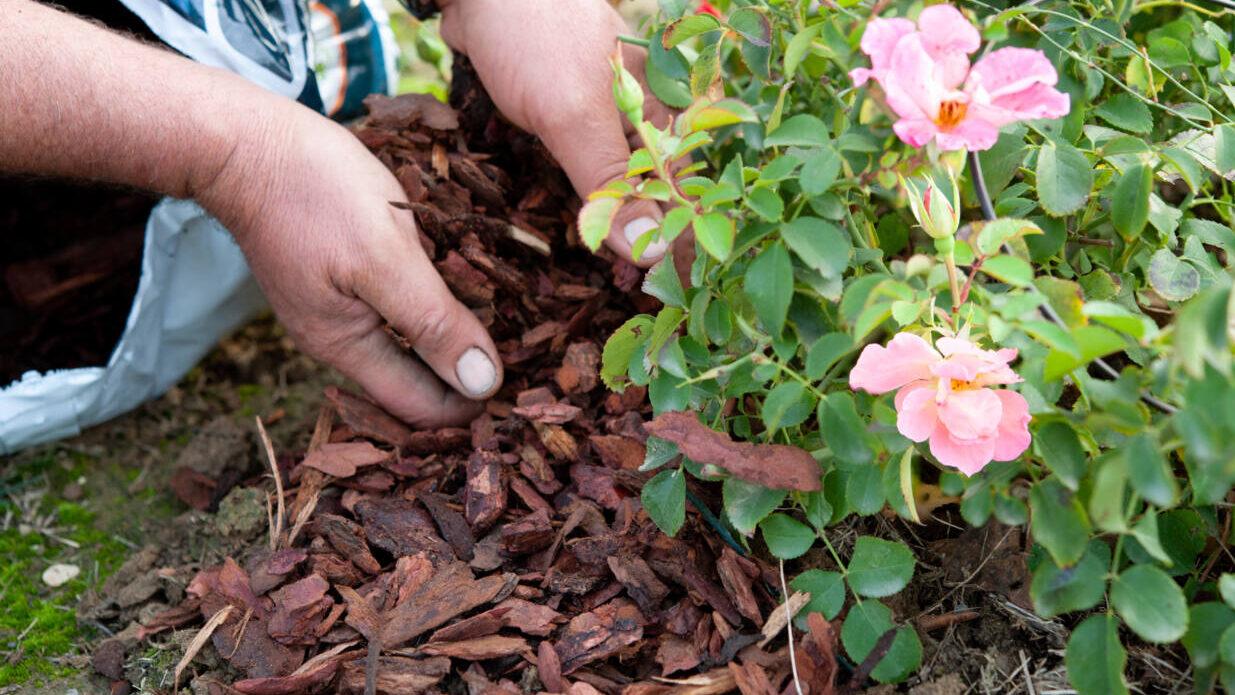
When it comes to beautifying your backyard, mulch may not be as exciting as growing roses or lilacs, but it plays an important role in keeping your outdoor spaces beautiful.
Mulch is basically a layer that you spread on top of the soil around your plants, explains Bryan Clayton, the CEO of GreenPal, which connects landscaping professionals to homeowners. Mulch is typically comprised of organic material such as shredded bark.
MORE: What to plant in spring: Get started now on your garden
“It’s a game changer for any garden because it does a bunch of stuff: Mulch helps hold moisture in the soil, keeps the soil cool under the hot sun, and even helps prevent weeds from popping up,” says Clayton, who has been in the landscaping business for 22 years.
You can find bags of organic mulch, like this dye-free wood Miracle-Gro mulch, for under $4 or Vigoro mulch in black, red or brown for around $3 at Home Depot.
Ahead, gardening experts give a primer on mulch, including how much you need, how to use it, materials it’s made of, and mistakes to steer clear of when using it.
What Is Mulch?
Mulch is a permeable material that covers the planting mix in a landscape, explains Cate Singleton, director of landscape design for Tilly, a company that works with homeowners. It should be used for any surface that is organic material, but shouldn’t be spread out on your actual lawn space.
In addition to deterring weed growth and adding nutrients to soil as it breaks down, mulch is also a nice touch to a gardening bed, Singleton says.
What Does Mulch Do?
Some benefits of mulch include insulating the roots of plants during colder months, helping to retain moisture during inclement weather, and preventing landscape mix from eroding during heavy storms, Singleton says.
While it has the added benefit of making your garden look tidy and uniform, the real purpose of mulch is plant protection.
“Mulch acts like a blanket, insulating plants from extreme temperatures,” Clayton says. “In the summer, it keeps the roots cool, and in the winter, it can help keep them warm.”
Because it creates a barrier, mulch can also help physically protect the roots of plants and trees from lawn mowers and weed whackers.
What Is Mulch Made Of?
There are both organic and inorganic options for mulch.
“For landscape areas, I suggest an organic option to reap the most benefit for the plants,” Singleton says.
A few examples of organic mulches include pine needles, wood chips, bark and nut shells.
Inorganic mulches include materials like crushed stone or recycled tires that have been broken down into shreds. Crushed stone can be a great option for seating areas and walkways, while recycled tires can provide a soft cushion for play areas, she says.
How Much Mulch Do I Need?
Figuring out how much mulch you need for your outdoor space is an easy task. A good rule of thumb, according to Clayton, is when it comes to figuring out how much you need, factor in about 2 to 3 inches of mulch for your garden beds.
“Don’t go and pile it on too thick, because using too much can suffocate your plants’ roots,” he cautions.
Home Depot’s online mulch calculator can help you determine how many bags of mulch you’ll need to buy for your project. The calculator defaults to using 3 inches of mulch, and asks you to input the length and width of your project area or the square footage.
How Often Do You Need to Replace Mulch?
Top-dressing mulch once a year is pretty typical for most homeowners.
If you live in an area with more extreme weather events, though, Singleton says it may become necessary to add mulch more frequently.
There is no need to remove old mulch, as long as it hasn’t become a matted layer. If this is the case, tilling it in a bit before top-dressing the landscape beds with new mulch will allow for better airflow, she suggests.
Mulch loses its color pretty quickly, so if you put down the red chips, you can expect them to fade. That’s because the sunlight bleaches them out, Clayton says, and rain can also wash away some of the color.
But don’t sweat it: “While the fresh color looks nice, the real benefit of mulch is in the protection it offers and the organic matter it adds to the soil as it breaks down,” he says.
Expert Tips for Buying Mulch
In general, you’ll want to steer clear of rubber mulch for garden beds, Clayton says.
It might last longer and not fade, but it doesn’t offer the same benefits as organic mulch — it can actually heat up too much and harm your plants, he says.
Organic materials that are free of dyes and synthetic materials are the way to go when purchasing mulch, Singleton says.
She also prefers to purchase mulch in bags, but if you’ve got a large landscaping project, buying it in bulk will save you some money and will require a wheelbarrow.


